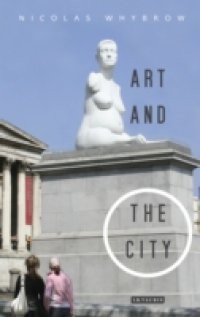Henri Lefebvre predicted that the future of art was urban. Art and the City adopts this statement as its cue, taking into account the performative and relational 'turns' of art in more recent times. The book portrays what may be at stake in the emerging triangulation of art, the city and the rights of citizens, concentrating particularly on their mutual contingencies. It goes on to develop approaches to writing about artworks from the point of view of the spectator's first-hand encounter with them in urban contexts. In exploring how artworks present themselves as a means by which to navigate and plot the city for a writing interlocutor, Nicolas Whybrow discusses diverse examples, representing three key modern modalities of urban arts practice. The first, walking, involves works by Richard Wentworth, Francis Alys, Mark Wallinger and others. The second, play, includes art by Antony Gormley, Mark Quinn and Carsten Holler. The third, cultural memory, Whybrow addresses through the controversial urban holocaust memorial sites of Peter Eisenman's memorial in Berlin and Rachel Whiteread's in Vienna.

